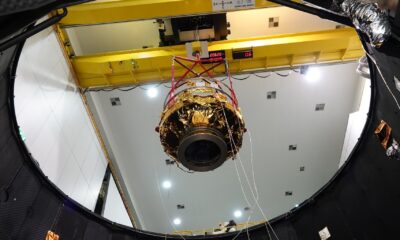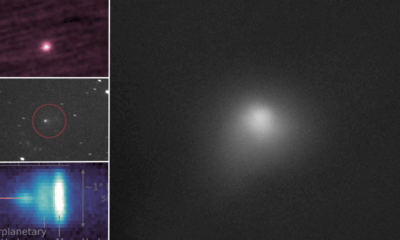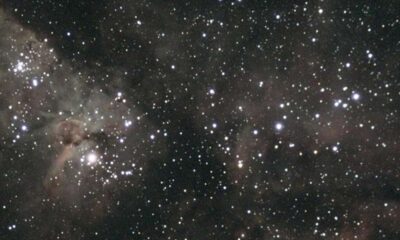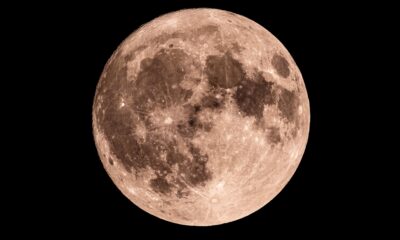Science
Astronomers Unveil Secrets of the Colorful Butterfly Nebula
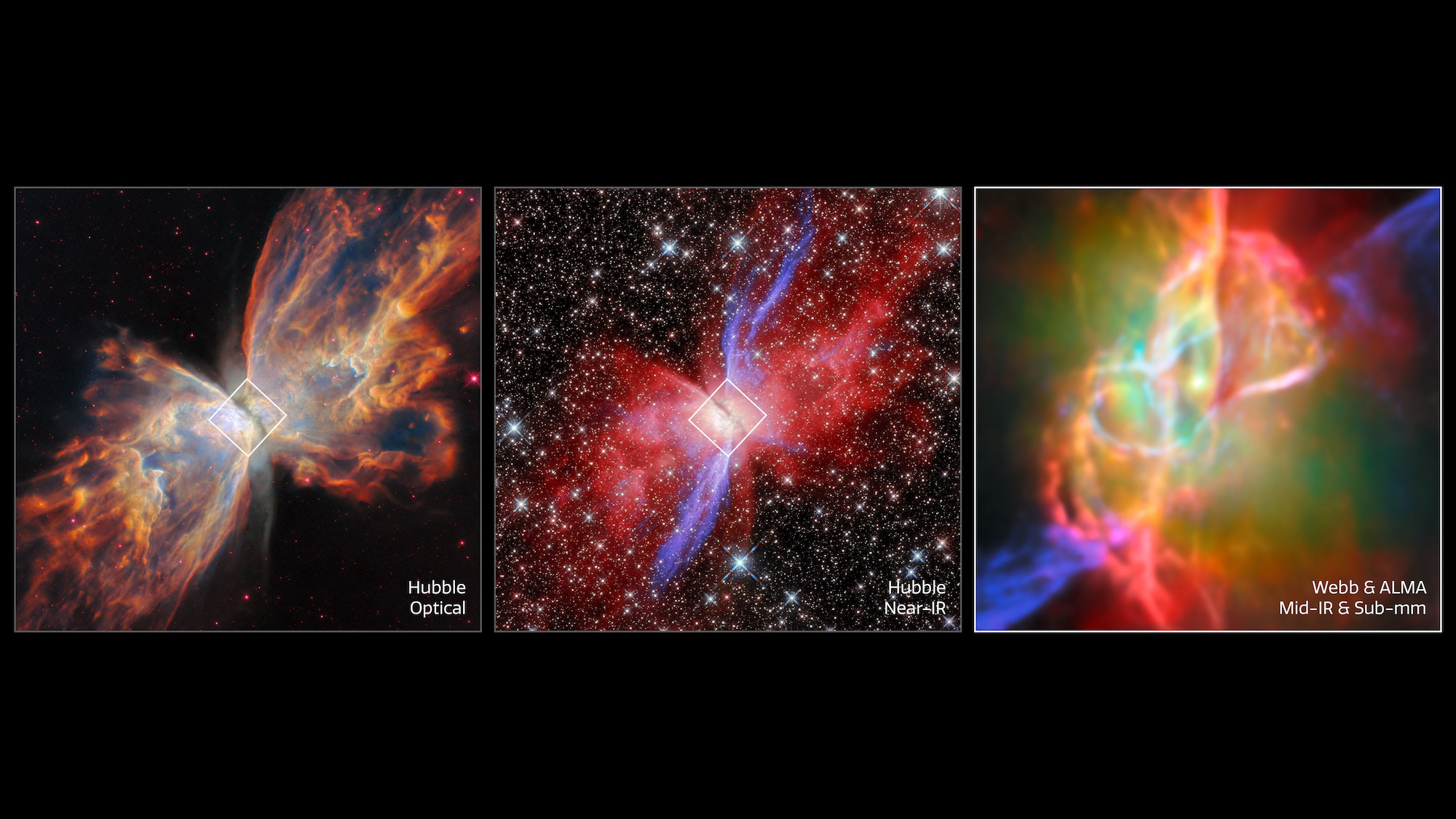
The planetary nebula NGC 6302, often referred to as the “Butterfly Nebula,” has revealed new insights into the formation of cosmic materials, thanks to the advanced capabilities of the *James Webb Space Telescope* (JWST). Located approximately 3,400 light-years from Earth in the constellation Scorpius, this nebula is a focal point for astronomers aiming to understand the origins of rocky planets. Findings published in the *Monthly Notices of the Royal Astronomical Society* illuminate the nebula’s complex chemistry and its role in planetary formation.
Lead researcher Mikako Matsuura from *Cardiff University* emphasized the significance of these observations, stating, “We were able to see both cool gemstones formed in calm, long-lasting zones and fiery grime created in violent, fast-moving parts of space, all within a single object.” This research sheds light on the dual processes occurring within NGC 6302, providing a more comprehensive picture of how celestial bodies are composed.
Contrary to what the name “planetary nebula” suggests, these structures are not sites of planetary formation. The term originated centuries ago when early telescopes made these objects appear round. As technology progressed, it became clear that planetary nebulae, such as NGC 6302, are formed when stars ranging from 0.8 to eight times the size of our Sun shed their outer layers at the end of their life cycles. These nebulae are relatively short-lived, existing for around 20,000 years before dispersing into space.
New Discoveries in Cosmic Chemistry
The JWST has provided astronomers with unprecedented views of NGC 6302, revealing its unique butterfly-like structure. The nebula features two lobes extending outward, resembling the wings of a butterfly, with a dark region of gas at the center representing the body. This tire-shaped midsection, while appearing flattened from Earth, conceals a stellar core blazing at an astonishing 395,540 degrees Fahrenheit. This intense heat contributes to the formation of various minerals and organic materials detected by the telescope.
The latest observations have confirmed nearly 200 spectral lines, offering a detailed spectrum of the gases and particles within the nebula. Matsuura stated, “For years, scientists have debated how cosmic dust forms in space. But now, with the help of the powerful James Webb Space Telescope, we may finally have a clearer picture.”
Most cosmic dust consists of random atomic structures resembling soot. However, the extreme energy within NGC 6302 allows its particles to fuse into more complex materials, including crystalline silicates such as quartz and metals like iron and nickel. Notably, the study revealed the presence of carbon-based molecules known as polycyclic aromatic hydrocarbons (PAHs), which are commonly found in pollutants on Earth. This discovery may provide critical insights into the origins of these compounds in space.
Implications for Planetary Formation
While planetary nebulae do not directly create planets like Earth, they function as factories producing essential components for carbon-rich worlds. The research team, led by Matsuura, hopes that continued investigations will deepen our understanding of the cosmic processes that contribute to the formation of life-sustaining planets. “This discovery is a big step forward in understanding how the basic materials of planets come together,” he noted.
The findings from NGC 6302 highlight the intricate interplay between stellar evolution and the development of planetary systems. As astronomers analyze more data from JWST, the potential for groundbreaking revelations about the universe’s formation processes continues to grow, paving the way for a better understanding of where our own planet—and life itself—originated.
-

 Technology4 months ago
Technology4 months agoDiscover the Top 10 Calorie Counting Apps of 2025
-

 Health2 months ago
Health2 months agoBella Hadid Shares Health Update After Treatment for Lyme Disease
-

 Health3 months ago
Health3 months agoErin Bates Shares Recovery Update Following Sepsis Complications
-

 Technology3 weeks ago
Technology3 weeks agoDiscover 2025’s Top GPUs for Exceptional 4K Gaming Performance
-

 Technology2 months ago
Technology2 months agoElectric Moto Influencer Surronster Arrested in Tijuana
-

 Technology4 months ago
Technology4 months agoDiscover How to Reverse Image Search Using ChatGPT Effortlessly
-

 Technology4 months ago
Technology4 months agoMeta Initiates $60B AI Data Center Expansion, Starting in Ohio
-

 Technology4 months ago
Technology4 months agoRecovering a Suspended TikTok Account: A Step-by-Step Guide
-

 Health4 months ago
Health4 months agoTested: Rab Firewall Mountain Jacket Survives Harsh Conditions
-

 Lifestyle4 months ago
Lifestyle4 months agoBelton Family Reunites After Daughter Survives Hill Country Floods
-

 Technology3 months ago
Technology3 months agoUncovering the Top Five Most Challenging Motorcycles to Ride
-

 Technology4 weeks ago
Technology4 weeks agoDiscover the Best Wireless Earbuds for Every Lifestyle



